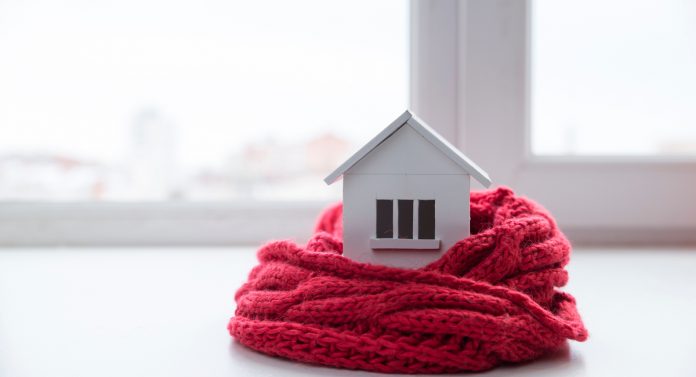Cold exposure can kill you, or leave you wretched in the winter. Why don’t you just turn the heat on then? Well, it can be costly to heat your house, or take up all of your time. I will be presenting some ideas that this winter will save you time and effort. Along with cutting back on your bill for heating.
The solution is to look at how nature deals with the cold, and then apply the lessons to the following goals:
- Preserve the heat you have.
- Keep the cold out.
- Minimize the heating needed.
- Create winter comfort
Adding Small Gains
In this post, my purpose is to keep your money in the bank while keeping you safe and cozy. There’s not a single answer there.
That’s why my plan is to propose 10 little things that you can do without too much effort. The 10 little items are going to make a huge difference when taken together.
The First Method


#1 – Cold sinks. Igloo’s is influenced by the concept of a cold sink. The floor is never flat inside an Igloo, but it has three tiers.
The highest degree for living and sleeping. The middle stage for cooking. The cold sink is considered the lowest level. In a cold sink, the coldest air comes to rest.
Because in your house you can not “dig” a cold sink, you will need to “rise” above the cold.
To accomplish this you can use platforms and bricks. E.g. Raise your work desk and chair. This can be achieved by inserting bricks under the legs of the desk and raising a small platform for the chair.
You can make platforms in your kitchen, your bathroom, anywhere you spend a lot of time.
Principle: Coldest air accumulates in the cold sink.
The Second Way
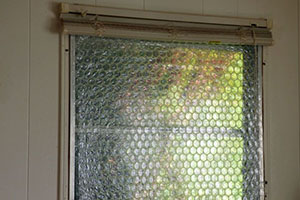

Both snow and compacted snow have insulating characteristics. This is due to the snow being trapped within thousands of super tiny air pockets.
By using bubble wrap and egg trays, the goal is to apply the concept of air trapped in pockets.
#2 – Use bubble wrap to insulate windows. You can tape it directly to the glass.
#3 – Apply bubble wrap and egg trays to boards of Masonite or plywood. You can then use the boards to increase insulation where cold is seeping in.
Principle: Large exposed surfaces, even double insulated windows, still allow convection, whereas air pockets don’t.
Related: 36 PVC DIY Projects for Your Homestead
Another Thing To Consider
Fireplaces are perfect for heating rooms, but a lot of heat is lost through the chimney. The goal is to optimize the heat harvest from your fire.
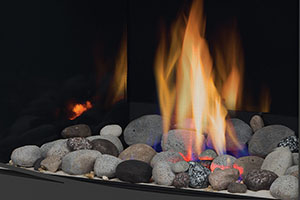

#4 – Place rocks above the fire on a grid. You can move them into a steel bucket once they are heated, and position them inside a room.
In the process, the stones will radiate their heat, warming the room.
Principle: Maximizing heat harvest from fire through capturing heat in rocks and releasing the heat into rooms where there is no fireplace.
Related: How To Turn Bacon Grease Into Emergency Candles
Limiting Movement
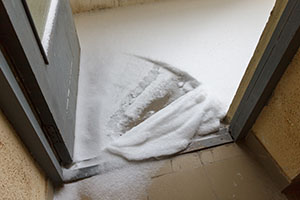

The longer you open and close your refrigerator door on a hot summer day the longer you need to operate the cooling system.
The result of allowing cold air into a warm space is the same. You would like to minimize the amount of time you need to open the doors.
#5 – Bring as many supplies in form outside as possible. Every time you go outside, your house looses heat.
#6 – Store the items in the rooms where they are to be used. Don’t store anything in rooms you are sealing off for the winter.
#7 – Hang a waited tarp in front of all outside doors. When entering or exiting your home, make sure at least one is closed before opening the other.
Principle: Limit movement and transfer of heat from warm rooms to cold one’s.
Another Effective Idea
#8 – Black, dark grey or navy blue surfaces absorb more heat from the sun than light colored surfaces.In the winter, painting surfaces that receive sunlight will help heat your home.
It will heat up the air above your ceiling and help keep your house warm by painting your roof black or even dark brown.
Principle: Dark colors absorb energy.
Protect Against Low Temperatures


#9 – It might be a little too much to paint exterior walls black, but other dark colors may improve the potential for energy absorption. Particularly for walls that are going to get sunlight. Try dark greys, dark shades of earth like clay or putty.
#10 – To defend against very low temperatures, you can wrap water pipes and tree stems or trunks in a few layers of bubble wrap. You can add a final coat of black plastic after you have applied the bubble wrap, or simply spray paint the bubble wrap black, ensuring optimum heat absorption during sunlight hours.
Related: How To Build a Solar Heater Using Aluminum Cans
Reducing Air Volume
Reducing the air volume inside a room will reduce the amount of heat needed to raise the temperature of the room.
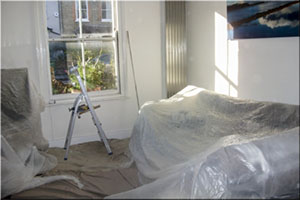

#11 – Move a double bed, a desk, and a closet out of the room you’re sealing for the winter, into the room you’re going to be living in. Cover them with a sheet. This can reduce the volume by as much as 8 square meters or 280 cubic feet.
Another way to reduce the amount of air is by adjusting the shape of a room. Igloo’s get narrower toward the end. This means heating with less air than in a square room.
#12 – Run a rope across your room, from above your bed to where your room is reached by a radiator or heat. Drap a wide section of canvas or cotton or a triangular tent-shaped tunnel over the rope. When you sleep snugly, this will keep the heat trapped around your bed spot.
Principle: Reduce the volume of air that has to be heated.
Related: 9 Items For The Winter Prepper Checklist
Each of the thoughts I have alluded to reflects one small action. The goal is to accumulate the effect of many tiny acts.
Let’s take the example of moving furniture into a room to decrease air volume.
- The items moved into the room (in #8) decreased the air volume by 280 cubic feet.
- If you assume the average room volume at 1000 cubic feet, you are reducing air volume by between 20% and 25%.
- This can easily result in a 5% – 10% reduction in the heating cost of that particular room.
One major financial saving would be generated by accumulating all of these small gains. If you save 20% off your heating bill, how many dollar bills can go back into your pocket?
And you’ve got it, folks. You could be heading for your most relaxing winter yet with the money you save and the heat you get.
Go and get prepping!



